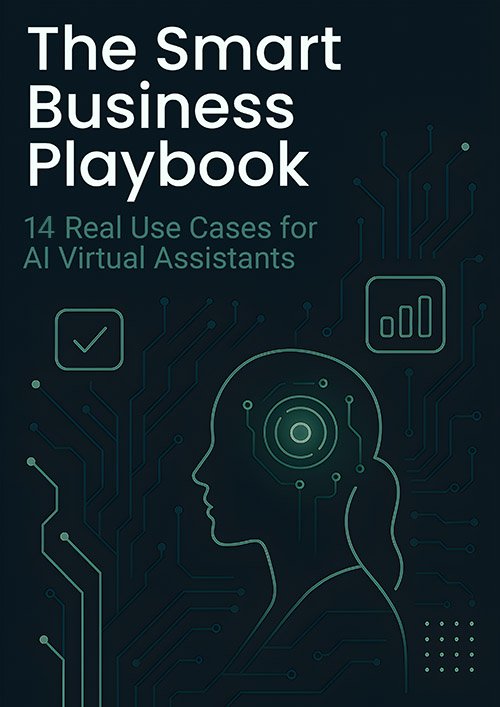You'll need a structured compliance training framework that combines interactive learning methods with essential legal protocols for new hires. Start with clear policy definitions and systematic onboarding procedures, then implement engaging content through videos, quizzes, and real-world scenarios. Track progress via your learning management system while maintaining OSHA and HR compliance standards. A strategic approach to new hire training will strengthen your organization's regulatory foundation and risk management.
Key Takeaways
- Develop a comprehensive onboarding program with clear policies, Code of Conduct, and industry-specific compliance requirements.
- Implement interactive training modules using gamification, videos, and quizzes to enhance engagement and knowledge retention.
- Incorporate real-world scenarios and role-playing exercises to demonstrate practical application of compliance protocols.
- Use a Learning Management System to track progress, automate assessments, and ensure completion of mandatory training.
- Create regular feedback loops through surveys and assessments to identify knowledge gaps and improve training effectiveness.
Building a Structured Compliance Framework

When establishing a structured compliance framework, organizations must prioritize clear policy definitions and systematic training protocols that align with regulatory requirements.
Your HR team should develop a thorough employee handbook and Code of Conduct that outlines specific compliance expectations during the onboarding process.
You'll need to implement a learning management system to effectively track and manage your Compliance Training Programs. This platform helps monitor employee progress, ensuring they understand key policies around anti-harassment, data protection, and other regulatory requirements.
By integrating regular training sessions into your company culture, you're creating accountability while reinforcing critical compliance knowledge.
Remember to establish measurable metrics to evaluate your program's effectiveness and regularly update your training materials to reflect current regulations and industry standards. Additionally, ensure that your onboarding process includes I-9 form verification to confirm employee eligibility and compliance with federal regulations.
Engaging Training Methods and Interactive Learning
To maximize compliance training effectiveness, your organization must embrace dynamic, interactive learning methods that drive engagement and knowledge retention.
Transform your compliance training program by implementing gamification techniques like scoreboards and rewards, which notably boost employee engagement. You'll want to diversify training content through videos, infographics, and interactive quizzes to accommodate various learning styles.
Incorporate real-life case studies and role-playing scenarios to help employees apply compliance concepts in practical situations. Choose-your-own-adventure scenarios enhance the learning experience by putting participants in active decision-making roles.
Additionally, consider integrating DEI training as part of your compliance program to foster a culture valuing diversity and innovation. Don't forget to collect regular feedback from trainees to refine your training methods and ascertain content remains relevant. This thorough approach creates a more engaging and effective compliance training environment that resonates with new hires.
Essential Legal and Safety Protocols

Following effective engagement strategies, your organization must address the foundational legal and safety requirements that protect both employees and the company.
Your onboarding program should prioritize compliance training that covers vital legal protocols and workplace safety measures, ensuring your team understands their responsibilities and rights.
Effective onboarding starts with thorough compliance training, empowering employees to understand and uphold workplace safety and legal standards.
- Integrate OSHA-mandated safety training specific to your industry, addressing the 2.8 million annual workplace injuries through thorough training materials.
- Implement anti-discrimination and harassment prevention training to maintain a respectful work environment and meet federal requirements.
- Establish clear emergency response procedures following OSHA guidelines to protect employees during crisis situations.
- Introduce your company's code of conduct early in the onboarding process, aligning employee behavior with company values and reducing workplace conflicts.
- Additionally, ensure that your training addresses HR confidentiality laws to safeguard employee privacy and enhance trust within the organization.
Measuring Understanding and Progress
How effectively your compliance training program performs depends on your ability to measure and track employee understanding. You'll need to implement regular feedback surveys and assessments throughout your training courses to guarantee new hires grasp critical concepts.
Using Learning Management Systems helps you monitor progress systematically while gathering valuable data on completion rates and performance metrics. To measure understanding effectively, incorporate real-world applications through practical scenarios that connect theoretical knowledge to daily work situations. Set clear success metrics for your employee training, focusing on compliance rates and observable behavioral changes.
Don't overlook the importance of post-training feedback – it'll help you identify knowledge gaps and refine your compliance training materials. Regular monitoring guarantees your new hires meet regulatory requirements while maintaining high standards of workplace safety and legal compliance. Additionally, utilizing data-driven insights from onboarding software can enhance your training effectiveness.
Creating a Culture of Ongoing Compliance

While initial compliance training lays the foundation, building a sustainable culture of ongoing compliance requires deliberate, long-term strategies.
Creating a resilient compliance culture demands strategic vision and sustained commitment beyond basic training programs.
You'll need to integrate compliance training into your organization's daily operations and empower your new hires through continuous learning opportunities.
- Incorporate micro-learning and gamification elements into training sessions to boost engagement and knowledge retention.
- Foster employee collaboration by creating open channels for compliance-related discussions and concerns.
- Implement regular feedback loops to assess training effectiveness and adapt your programs accordingly.
- Recognize and reward team members who demonstrate strong compliance behaviors.
To guarantee successful onboarding shifts into ongoing compliance, you'll want to maintain consistent communication about compliance expectations. Opening communication channels is essential to creating an environment where employees actively participate in shaping and maintaining your culture of compliance through regular engagement and shared responsibility.
Frequently Asked Questions
What Are the 10 Strategies to Improve Compliance?
When JP Morgan faced compliance issues, they transformed training through engagement techniques, interactive modules, scenarios, gamification, feedback, visuals, bite-sized content, role-playing, case studies, and incentive programs.
How Do You Make Compliance Training Interesting?
You'll make compliance training engaging through interactive modules, gamified learning, real-life scenarios, storytelling, role-playing exercises, group activities, visual aids, engaging videos, feedback mechanisms, and incentive programs.
How Can I Improve My Compliance Training?
Transform dry policies into engaging content with interactive modules and real-life scenarios. You'll boost retention through gamification, visual aids, and personalized learning paths. Include role-playing exercises and continuous feedback mechanisms.
How Do You Get Employees to Complete Compliance Training?
Boost engagement through gamification elements, set clear deadlines, track progress, and implement incentive programs. Use interactive content, social learning, and accountability partners while sending regular reminders to guarantee timely completion.


